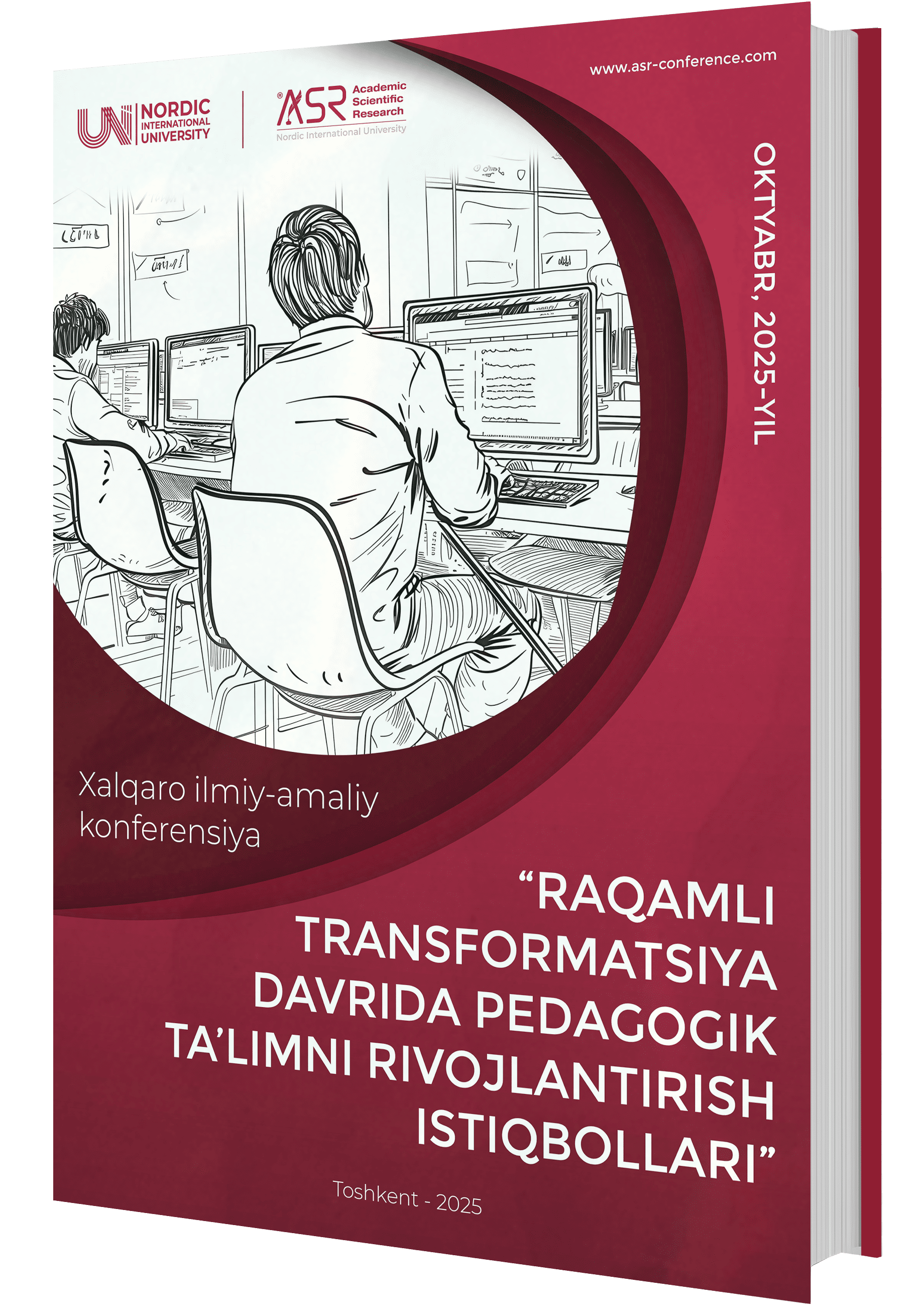MODELLING OF PHYSICAL PHENOMENA AND DEVELOPMENT OF VIRTUAL LABORATORIES: APPLIED ASPECTS
Аннотация
Virtual modeling tools allow the replication of physical processes in real-world conditions, providing the opportunity to study their laws in greater depth. Therefore, improving virtual laboratories and modeling methods is a relevant issue. The aim of this study is to investigate methods for modeling physical phenomena, analyze the applied aspects of virtual laboratories, and determine the effectiveness of their use in various fields. Experimental methods and data analysis techniques were used in the research process. Computer simulation methods were applied to model physical equipment. The software tool "Blender" was used for this purpose. As a result of the study, a number of important conclusions were made in the field of modeling physical phenomena and developing virtual laboratories. The use of modeling methods in studying physical processes was shown to help understand their complexity and describe them numerically. Furthermore, their effectiveness in real engineering, scientific, and industrial processes was determined.
Библиографические ссылки
El Kharki, K., Berrada, K., & Burgos, D. (2021). Design and implementation of a virtual laboratory for physics subjects in moroccan universities. Sustainability (Switzerland), 13(7). https://doi.org/10.3390/su13073711
De Jong, T., Linn, M. C., & Zacharia, Z. C. (2013, April 19). Physical and virtual laboratories in science and engineering education. Science. American Association for the Advancement of Science. https://doi.org/10.1126/science.1230579
Xu, W., Chang, X., Zhang, H., & Zhu, X. (2021). Double Closed-loop Fuzzy Control and VR Simulation of Single Inverted Pendulum. In Chinese Control Conference, CCC (Vol. 2021-July, pp. 230–233). IEEE Computer Society. https://doi.org/10.23919/CCC52363.2021.9550593
Tarhi, I., Hassouni, T., Al Ibrahmi, E. M., Lamri, D., & El Mahjoub, C. (2023). MATHEMATICAL MODELING IN PHYSICS AND CONCEPTIONS OF LEARNERS: FORCE AND DIFFERENTIAL EQUATION. International Journal on Technical and Physical Problems of Engineering, 15(3), 1–8.
Redish, E. F. (2017). Analysing the competency of mathematical modelling in physics. In Springer Proceedings in Physics (Vol. 190, pp. 25–40). Springer Science and Business Media, LLC. https://doi.org/10.1007/978-3-319-44887-9_3
Billah, A., & Widiyatmoko, A. (2018). The Development of Virtual Laboratory Learning Media for The Physical Optics Subject. Jurnal Ilmiah Pendidikan Fisika Al-Biruni, 7(2), 153–160. https://doi.org/10.24042/jipfalbiruni.v7i2.2803
7. Putri, S. N. R., Muchlas, M., & Ishafit, I. (2022). Development of Fluid Virtual Laboratory for Online. Jurnal Pendidikan Fisika, 10(1), 36–42.
Julianti, B., Haryadi, R., & Oktarisa, Y. (2023). Development of Virtual
Загрузки
Опубликован
Выпуск
Раздел
Лицензия
Copyright (c) 2025 Bakitzhan KURBANBEKOV , Aynur KARIMOVA , Meirambek BERKIMBAEV

Это произведение доступно по лицензии Creative Commons «Attribution-NonCommercial» («Атрибуция — Некоммерческое использование») 4.0 Всемирная.
Условия лицензии
Эта работа доступна под лицензией Creative Commons Attribution-NonCommercial 4.0 International License. Чтобы просмотреть копию этой лицензии, посетите http://creativecommons.org/licenses/by-nc/4.0/ или отправьте письмо по адресу Creative Commons, PO Box 1866, Mountain View, CA 94042, США.
По этой лицензии вы можете:
Поделиться — копируйте и распространяйте материал на любом носителе и в любом формате.
Адаптируйте — делайте ремиксы, трансформируйте и дорабатывайте материал.
Лицензиар не может отозвать эти свободы, если вы соблюдаете условия лицензии. На следующих условиях:
Атрибуция. Вы должны указать соответствующую ссылку, предоставить ссылку на лицензию и указать, были ли внесены изменения. Вы можете сделать это любым разумным способом, но не таким образом, который бы предполагал, что лицензиар одобряет вас или ваше использование.
Некоммерческое использование — вы не имеете права использовать материал в коммерческих целях.
Никаких дополнительных ограничений. Вы не имеете права применять юридические условия или технологические меры, которые юридически запрещают другим делать все, что разрешено лицензией.





